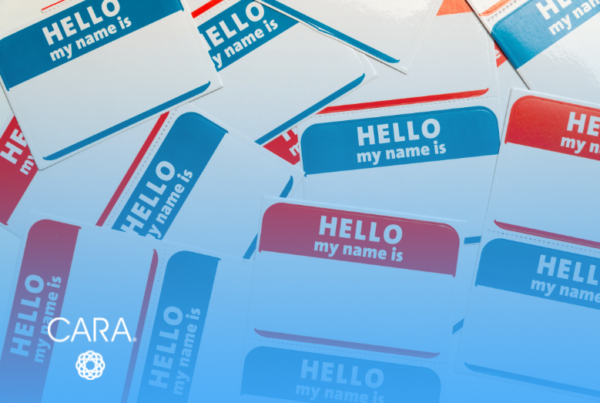
Picture this: Your organization has decided to build a ServiceNow platform to enhance your IT service desk capabilities to all end users. The platform would provide employees with multiple ways to reach the service desk to open incident tickets, including the ability to self-diagnose and fix minor issues by accessing a new knowledge center.
The business goal is wrapped around the need to streamline and create a more efficient service desk process. Your business case is sound, and now you must build an implementation team, which includes outstanding Organizational Change Management practitioners to ensure employees embrace and use the new portal. After all, projects are more likely to fail when OCM is not properly accounted for.
However, it’s easy to assume that the need for OCM support is minimal in the case of a ServiceNow IT service center platform. After all, your organization always had a help desk hotline number – you are now just expanding those services. That can be a mistake.
Never underestimate your end users’ resistance to change, especially if they cannot envision a need. Users will typically access the IT service center when technology issues develop, and they are unable to work. They will often take the easiest route to get their issue solved by picking up the phone. Downtime does not make for a great workday.
“After all, projects are more likely to fail when OCM is not properly accounted for.”
Make Targeted Communications a Priority
During a recent integration of a new ServiceNow IT service center platform we created a robust OCM plan, including a communications strategy that communicated to and convinced all audience members in the organization of the value of the features and benefits of the ServiceNow platform, which included the customized ability to:
- Continue to contact the help desk telephonically
- Get resolution to an issue through a chat session
- Open a ticket by completing an online form
- Self-diagnose minor issues through a knowledge center platform that included a growing service catalog
- Check on resolution progress of open tickets
- Learn of any organization-wide issues/outages that were impacting their ability to do their work
Effective, targeted communication is critical, especially when stakeholders do not have a firm grip on the need for the change. In this case employees were happy to use their desk phones to open a resolution ticket. During a change process, employees will typically fall back on the “what’s in it for me” concerns – how would the new ServiceNow service center help them more quickly resolve their issue.
As a result, communications must go beyond delivering project awareness, it must also convince all audience levels to actively support and commit to the change by providing evidence of how the new ServiceNow service center benefits all parties and the organization. Messages around simplicity, efficiency and expanded capabilities are crucial to end-users. Communications must also be open-ended, enabling stakeholders to have their questions answered.
To ensure this is done well, the communications lead must plan around what stakeholder audiences need to know, when they need to know specific messages and how those messages will be delivered. Poorly planned and executed communications often leads to a lack of user acceptance, understanding and frustration that can go all the way to the C-suite.
Six Communications Best Practices
Consider these six OCM communications best practices when implementing a ServiceNow platform:
- Communicate early. Never wait until the 11th hour to start your communications process. Your communications timeline should start early enough to allow stakeholders to decipher the change to ServiceNow and its impact. We started several months prior to launch with a variety of communications tactics, including a fluid intranet toolkit portal that housed all communications materials, with FAQs and a hotline link to have questions answered.
- Communicate often but plan it right. Is it possible to overcommunicate? Yes, if your messaging starts to become annoying – much like that TV spot that quickly grows old and tired. Establish a good communications rhythm. Repeating messages is important, but don’t let them become a nuisance your employees can easily tune out.
- Consider messages for all audience levels. Many organizations may miss out on opportunities to convey targeted, purposeful messages by limiting themselves to broad email or intranet communications. See the next best practice for additional channel ideas.
- Use multiple communications channels. If you want to reach 20 percent of your audience limit your content to the intranet. Many employees make occasional visits to the company intranet and may miss your message. Remember that your communications compete against their other work priorities. Complement email and intranet messaging with a broad array of tactics, including town halls, managers’ team key messages and lunch ‘n’ learns, which also allow for 2-way communications opportunities. Lunch ‘n’ learns, in particular, allow employees to “test-drive” the new portal and can be a great way to build interest and commitment.
- Use “tips and tricks” to arouse support and commitment. When the new service center is announced many employees will hesitate to move away from their telephone to open a ticket. Brief, memorable tips and tricks will teach employees something that will spur them on to learn more about the features and benefits of the new portal.
- Communications doesn’t stop after rollout. Make sure the change to the new service center sticks – employees will quickly move back to old habits in the weeks and months after your ServiceNow rollout unless you continue to keep the portal in front of them. Tell success stories that show how other employees made good use of the new service center and continue to offer tips and tricks. Share these via a variety of channels – the intranet, email, manager key messages and even your company’s video screens, if you have them.
Of course, it is critical that you also measure your communications’ effectiveness. Did employees rally around the new ServiceNow portal? Did they continue to exclusively use the help desk hotline? Did messages resonate with them? If so, how did they best receive them? Evaluate both your communications content and strategy.
Please connect with us if you could use Organizational Change Management help on a ServiceNow integration, or any project you have. We’re glad to help!



